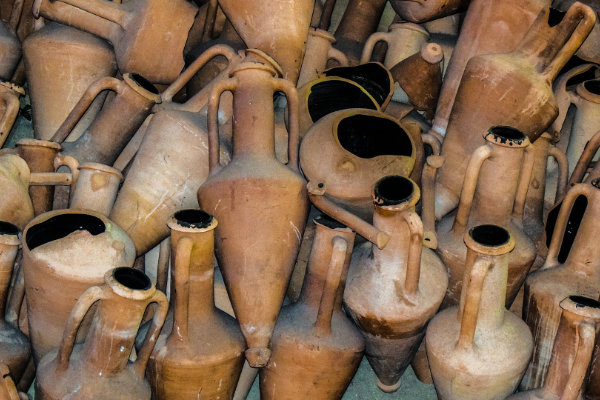
Yassi Ada
I was an archaeology student in 1974, working on Dr. George Bass’s last season excavating a 4th century Roman ship sunk off a tiny Aegean island smack dab on the modern border between Greece and Turkey. The island is called Yassi Ada, or Flat Island, and it’s nothing more than a hunk of razor-sharp volcanic rock the size of a football field, twelve feet above the water at its highest, without so much as a blade of grass.
Bass began excavating three stacked wrecks there in 1960, a year after sponge divers showed their location to archaeologist Peter Throckmorton. Now, after a five-year hiatus, Bass was returning for a final season on the oldest of the wrecks.
There was a lot of tension in the eastern Med in the spring of ‘74. Greece’s U.S.-supported military dictatorship had been losing popularity, and to try to get some of it back the Generals were flooding the media with propaganda calling for Enosis, or the annexation of Cyprus, which was about half ethnic Greek and half Turkish. Turkey had promised to invade Cyprus if Greece went ahead with annexation.
Coming by plane from Boston to Athens and then by ferry from Piraeus to the Greek island of Cos, I found the border with Turkey closed and ran across a few other members of the dig stuck on Cos. As luck would have it, I also found a friend’s boat tied up in the harbor. He was an alcoholic journalist, a former Washington Post middle-east bureau chief who had drunk himself out of his marriage and his job, but he still had his boat. The sailing community in the Aegean is really kind of small, and I had been around for a while and I knew a few people. After all the ‘hail fellow well met’ prelude, I asked if he would sail us to Bodrum, the dig’s gathering and staging point in Turkey, right across the straight from Cos. It took a bottle of gin to persuade him, but he finally agreed and the next morning he sailed all of us across. Don Frey, one of Bass’s staff and a fine archaeologist, met us at the dock. We had the right visas and Don convinced the guy with the rubber stamp to let us land. I hadn’t met Don before, and after I introduced myself he said, “Welcome to Bodrum Jonum, and always remember, Jonum means Dear!” It was going to be an fun summer.
Bodrum is an interesting town. It was called Halicarnassus in the 5th century BC, and was home to Herodotus, the first historian. The Mausoleum, one of the seven wonders of the ancient world, was built there in the 4th century BC. Our headquarters for getting all our gear together and checking it out before we headed out to the island was in a 15th century crusader castle.
Members of the dig crew straggled in over the next few days as they found their way across borders. Mary, a high school classmate of mine, took me completely by surprise. I knew she was studying classics at Washington University, but I had no idea she’d be at Yassi Ada. We’d never dated, but it was clear to everyone we knew each other well, and she was the only single woman on the dig, so I had guys coming up to me asking if it was okay if they “wanted to get to know her better.” I was amused and a little mean spirited, so I said, “No! Of course not! What the hell are you thinking?” Well, you had to find your fun where you could, and I knew Mary wasn’t looking for a boyfriend.
We were an eclectic crew. There was Pierre Bakai, a Lebanese archaeologist from the Tyre excavation who would take me to Bodrum’s taverns and shout out common Turkish names like Mehmet! and Youksel! There was always a Mehmet or a Youksel, and when one answered, he would say, “It’s been so long since you beat me at backgammon, and honor demands I even the score!” Pride always won out over absent memory, and Pierre never lost. He played for drinks for both of us. Nice. There was Dr. Michael Katsev and Robin and Gay Piercy, all fresh from their reconstruction of the Kyrenia shipwreck on Cyprus; Dick Steffey and Don Frey, long time colleagues of Bass and Katsev; a history professor from New Hampshire, a naval architect from Seattle, husband and wife graduate students from Texas, an archaeologist from the Netherlands, an American photographer, a navy diving medical officer from Groton, and T. Walker Lloyd, the VP of sales for Rolex America. There were a few others I don’t remember after all these years, but they were fine young men and women all. Rounding out our crew was our Turkish overseer Oz, the kitchen staff, and two local crew for the dive barge who had worked for Bass for many years. With wives and children, we were thirty-five on board the barge when the tugboat left Bodrum for the island.
It was an overnight trip under starry skies. Someone played a guitar. Bottles of wine were passed around. I feel asleep at some point and was awakened by sunlight and the sound of anchor chain running free as the barge was moored over the wreck.
We got busy erecting two large shelters on the island on concrete pads left from the earlier expeditions. There was already a solid wall to windward on each pad. We added framing and screening for the other three walls and a tin roof.
No power. There was a generator on the dive barge but the one on the island failed on our first day, and we never got it working again. We had camp cots. That was nice.
We had brought everything we needed with us including food and water, but not enough water for fresh-water showers. Our toilet was a convenient hole in the rock hanging out over the water at the far end of the island.
There were rats. Big rats. Even stranger, the rats survived on a diet of marine iguanas. There is a myth that marine iguanas exist only on the Galapagos islands of the Pacific, but there they were, thick around the waters of Yassi Ada in the Aegean Sea. We assumed that both the rats and the iguanas were shipwrecked castaways. A hundred years ago? A thousand? Two thousand? No way of knowing. Bass sent a dead rat back to Oxford looking for a clue to its origin. A letter came back scolding him for playing such a crude prank on the university, because everyone knew that no rat like this has ever existed anywhere in the Mediterranean.
I woke up one night to find one curled up next to me for warmth. My shout woke half the crew in the shelter and wasn’t appreciated, but what the hell, if I wake up with a giant rat in bed next to me, I think I have every right to let loose a high-decibel holler!
But overall life was good by dig standards. The cooks kept us well fed and we each had a personal stash of sodas and bottled fruit juices. We dropped wooden cases full of glass bottles in about ten feet of water near our landing beach and dove in whenever we wanted something cool in the middle of the day. We’d brought beer, wine, and gin too, but we were only allowed to drink alcohol on the night before our one day off a week. Deep diving protocol.
The work was challenging. At 140 feet, a diver had only fifteen minutes on the bottom twice a day, with 45 minutes of decompression on the way back to the surface. Nothing makes a diver colder than hanging motionless at a decompression stop breathing from compressed air. The air is cold after expanding to ambient pressure. It chills you from the inside out, so a wet suit is no help.
It’s really boring, too, just hanging there. Some of us kept paperback novels in the bucket at the 10-foot stop, where we had to wait the longest. As long as you didn’t take the book out of the water it didn’t fall apart, and you never lost your place. When you finished a page, you just ripped it out and let it drift away on the current.
A few days after we began dive operations on the wreck our supply boat arrived from Bodrum with news there had been a coup d’état on Cyprus by supporters of Enosis. We waited for the other shoe to drop.
Five days later I was on the bottom, working on the wreck. You’ve got to understand that at 140 feet, breathing regular air, everyone experiences nitrogen narcosis. It’s usually described as feeling like being drunk. You lose your inhibitions and your good judgement, and you feel pretty darn good. Well, being drunk never felt as good as being narced to me, but that’s just me. It’s a dangerous combination of symptoms, as a lot of divers have learned the hard way. But we’d been trained to work through it. You learn not to trust everything you see and hear when you’re narced. So, when I heard the sound of large ship screws over the noise of diving regulators and air-lifts, I wasn’t sure what was going on. I worked out my bottom time and headed for the first decompression stop, all the while searching the surface for some glimpse of large ships. Even though the water was crystal clear, I didn’t see anything, but the noise kept getting louder. When I finally broke surface and climbed the ladder to the deck of the dive barge, what I saw terrified me.
A convoy of Turkish gunboats was steaming south along the Turkish side of the island and a convoy of Greek gunboats was plowing north in Greek waters along the other side of the island. Their big guns were tracking each other, and our little island was the pivot. One of the crew held a tiny plastic transistor radio to his ear and was waving the antenna around trying to pick up the BBC or VOA. He was calling out bits of news as he heard them. Turkey had been true to their word and invaded Cyprus. The fighting was still confined to Cyprus itself, but both countries were on the verge of all-out war.
We had no two-way radio and therefore no communications with the mainland, but Oz Bey, our Turkish government overseer, had instructions: if war was imminent, he was to suspend our dig permit and we were not to leave the island. Period. We had to get by on the water and provisions we had on the island and any vessel leaving risked being fired upon. We had built our own detention camp!
We immediately rationed our food and water. Wars in that part of the world tended to be fast and furious, so we weren’t too concerned about running out of essentials, but it made good sense to be cautious. We also rationed our batteries. All we had was the one plastic transistor radio, the kind that was advertised back then as being “no larger than a pack of cigarettes”. It was our only connection with the outside world. Twice a day we’d find the high spot on the island, all twelve feet of it, and huddle around trying to pick up news. Some days we could, others we couldn’t. It was nerve wracking and by God boring, but, you know, you muddle through, and we were a good crew.
After the first week, the BBC broadcast news of a friendly-fire incident. The pilot of a Turkish Air Force fighter-bomber, patrolling at night, had radioed a verbal friend-or-foe challenge to a naval warship running without lights off the coast of Cyprus and received no reply. What the pilot didn’t know was that the Turkish destroyer Kocatepe was also under radio silence orders. The pilot dropped its bombs on the Kocatepe and sank it, sending sixty-seven sailors and marines to their watery graves.
The incident was a scandal for the Turks. Premier Ecevit offered to resign, but this was even more unpopular, and he stayed in office by acclimation. Smart move on Ecevit’s part. It was an instant affirmation of his leadership in time of war. Then the VOA broadcast that the Greek military junta had collapsed. The military dictator Georgios Papadopoulos was thrown out and a provisional democratic government took over. Two days later a general cease fire was declared on Cyprus. The Turks had taken control everywhere there was an ethnic Turkish majority, more than half the island, and both sides were standing in place. That’s when the last of our batteries ran out and the radio went silent. All we could do was wait in ignorance.
A few days later, around lunch time, we saw a small boat appear on the horizon from the direction of Bodrum. It took an hour before we could make out with binoculars that it was a mail boat. It took another two hours for the boat to reach us, and by that time every soul on the island had gathered in a semi-circle on the beach around George Bass. The boat drew up to our small dock and the lone occupant tossed a line to waiting hands and climbed ashore. He was an ancient fellow, probably in his late sixties, kind of small and scraggly. He had all of three teeth and a big smile on his unshaven face. He put his official postman’s hat on and buttoned up his threadbare uniform, then shuffled on bare feet as he reached into his mail pouch and removed a single yellow telegram and handed it to Bass with a two-fingered salute to his cap.
I heard George mutter something under his breath as he broke the seal and unfolded the paper. Everybody watched him read the telegram. He finished and sort of stared out over everyone’s head back towards Bodrum, then held out the paper to me and said, “It’s for you.”
Stunned, I took the telegram, well aware everyone was now focused on me. I looked down and read: ‘HOW ARE YOU STOP VERONICA’.
Ha! My girlfriend back in Boston wanted to know if I was okay. Nice, but surreal. I was in a daze. Why had the postman made the long trip out to the island just to deliver this useless telegram? Then I looked up. Thirty-three other people were staring, waiting for me to say something of great importance. It was pathetically funny.
I said, “Uh, it’s from my girlfriend, and she wants to know how I am.”
There was a moment of suspended animation, you know, when even the breathing of thirty-plus people seemed to pause, then the inquisitive looks on all their faces turned to sneers of disbelief and a collective moan spread through the crowd.
I think that for the first time since his arrival the postman suspected his heroic effort was being received with less than universal appreciation. But things happened very quickly after that. Some of the crew interrogated the postman about the war. Others debated the best course of action now that we could communicate with the mainland.
The postman knew little more about the invasion that we did. He said the harbormaster had confined our supply boat to Bodrum. The postmaster himself had placed the telegram in the postman’s hand and told him to get it to Dr. Bass immediately. Bass explained that the postmaster was a friend and no doubt selected a completely benign telegram as an excuse for the postman’s trip so he could provide us with some relief.
George decided to return to Bodrum with the mail boat. He gave everyone half an hour to bring outgoing mail, told the cook to give the postman a meal, and went off to pack a bag. When he returned, he listened to last minute requests from anxious crewmembers before he and the postman cast off the lines and the boat chugged away from the dock. He returned a few days later with the supply boat and permission for us to leave the island.
Thus ended the final excavation season of the Yassi Ada shipwrecks.
But there is just a little bit more to the story. It was 1974! While all this was going on, Richard Nixon’s presidency was collapsing back in Washington. Or perhaps it was the other way around. Perhaps all this was happening because Nixon’s administration was collapsing. Would Papadopoulos have annexed Cyprus if Nixon’s administration had been stable and strong? Would Turkey have invaded? I think the chaos in the U.S. provided an opportunity for these events to unfold.
And one other thing. As I was traveling back through Greece to Athens and a flight back to Boston, I stopped to visit friends in Cos and in Piraeus. Well, that’s the thing; I thought they were my friends. They slammed the door in my face. My “friends” in Cos at least had the kindness to explain themselves before shunning me. They said, “When Papadopoulos was in power we had to be nice to you. Now we don’t.”
It was an education.
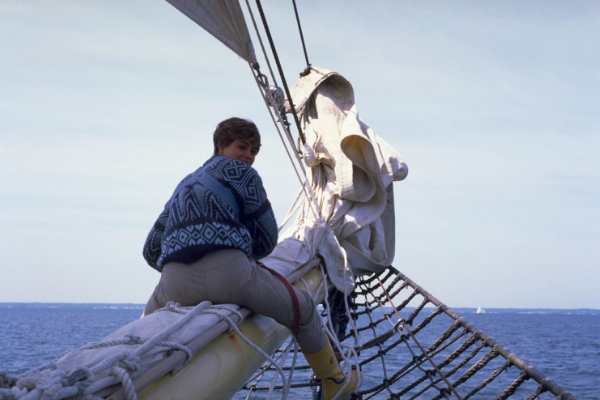
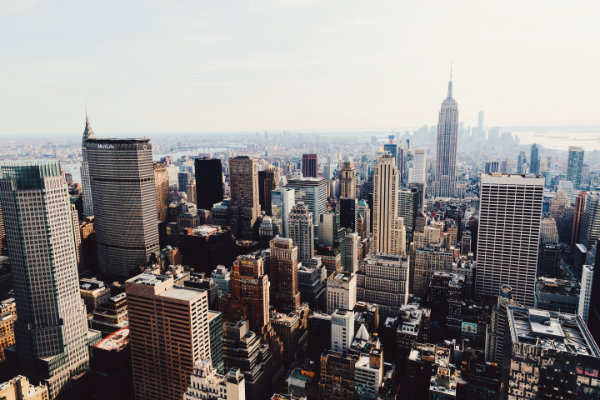
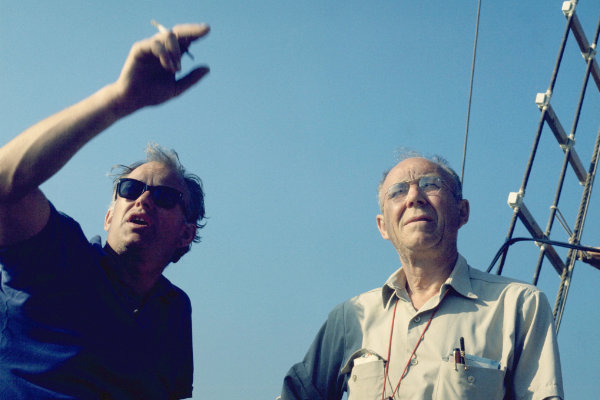
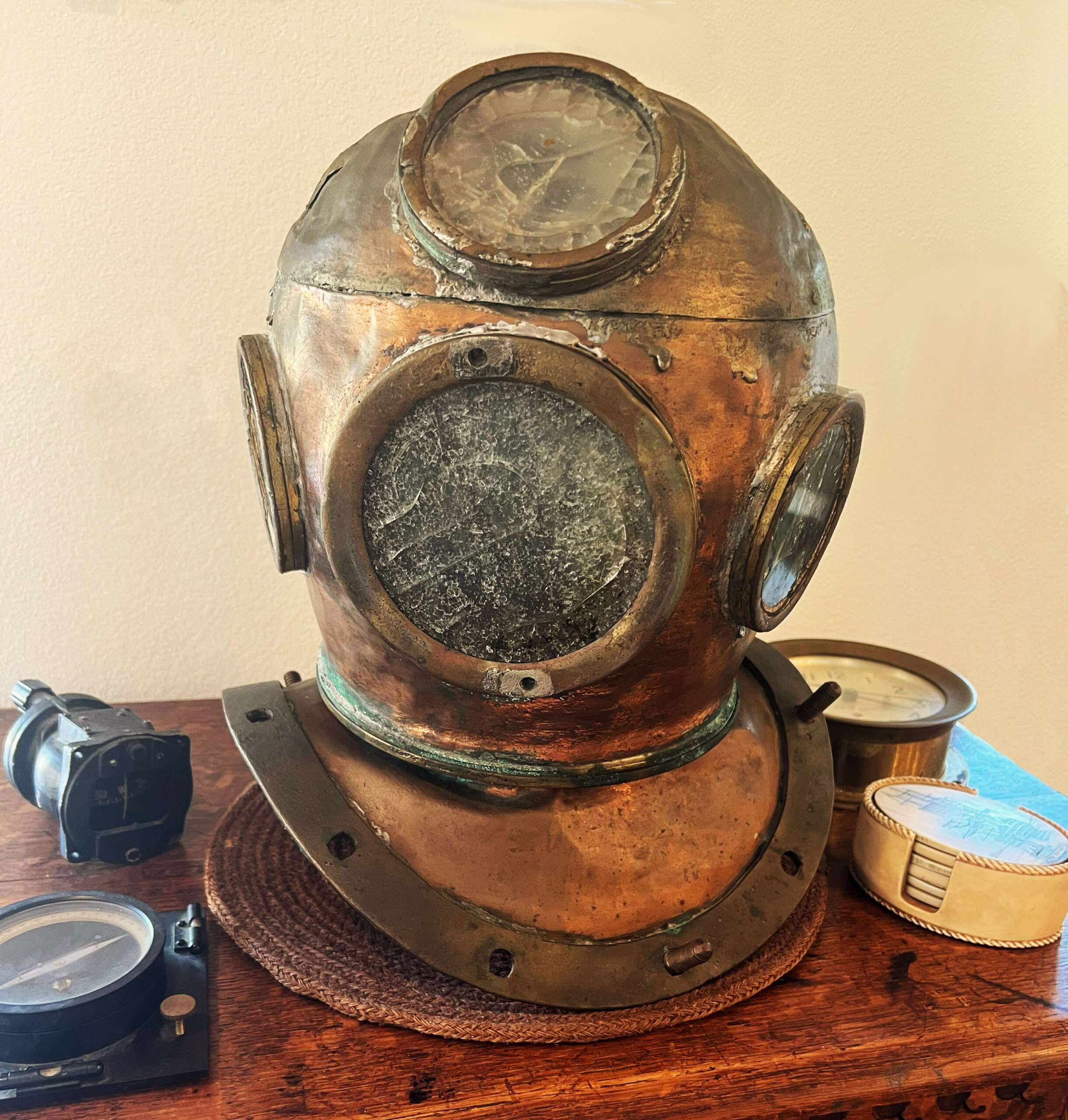
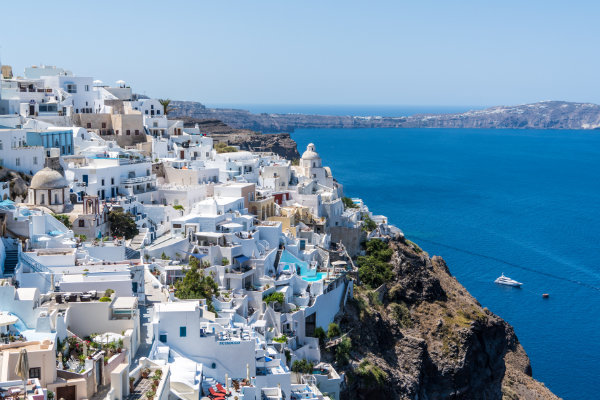
 I have been a diver and sailor since childhood. As a marine archaeology student in university and later in professional life, I have lived and worked across Europe, the Middle East, and North Africa. I have seen the wonders of coral reefs throughout the Caribbean and the Pacific, and have watched their decline with despair. As a sailor I have restored classic boats, crewed tall ships, earned my living as a lobster fisherman, and sailed full and by the wind as a metaphor for life. I live in San Diego with my wife and children and work in the defense industry.
I have been a diver and sailor since childhood. As a marine archaeology student in university and later in professional life, I have lived and worked across Europe, the Middle East, and North Africa. I have seen the wonders of coral reefs throughout the Caribbean and the Pacific, and have watched their decline with despair. As a sailor I have restored classic boats, crewed tall ships, earned my living as a lobster fisherman, and sailed full and by the wind as a metaphor for life. I live in San Diego with my wife and children and work in the defense industry.
Recent Comments